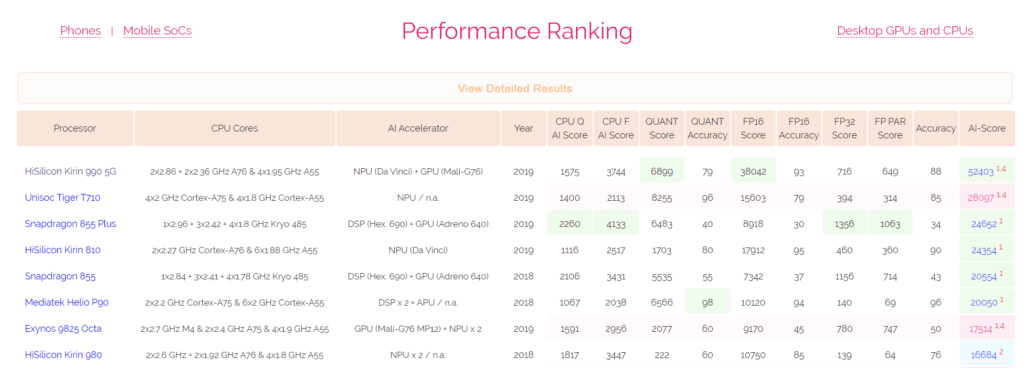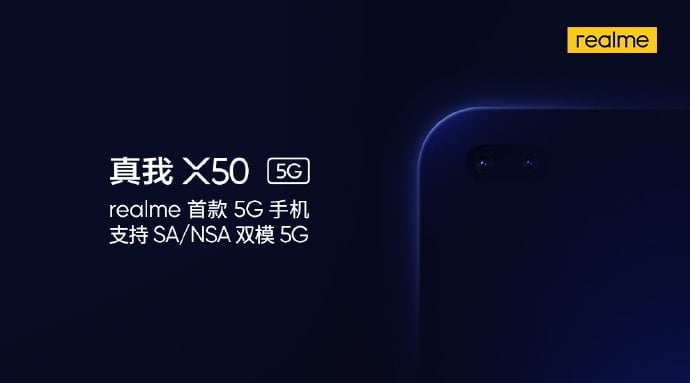Any links to online stores should be assumed to be affiliates. The company or PR agency provides all or most review samples. They have no control over my content, and I provide my honest opinion.
During the HiSilicon Kirin 990 5G announcement, Huawei made some bold claims about the advancement of their AI capabilities.
In one fo the slides they claimed up to a three-fold increase compared to the Exynos 9825, you never really know how true these claims are, or what stats they twist to make favour the company.
It would appear that, while not a three-fold improvement, the Kirin 990 5G has had a tremendous improvement compared to the previous generation, and surpasses the Snapdragon 855 by a large margin.
Ai-benchmark.com have managed to get the results for a Huawei Dev Phone that contains the HiSilicon Kirin 990 5G along with 8GB of RAM.
The benchmark consists of 21 Computer Vision and AI Tests performed by Neural Networks running on your smartphone. It is measuring over 50 different aspects of AI performance, including speed, accuracy, initialization time, etc. Considered Neural Networks comprise a comprehensive range of architectures allowing to assess the performance and limits of various approaches used to solve different AI tasks.
The results show the HiSilicon Kirin 990 5G achieving a score of 52403, followed by the Unisoc Tiger T710 with 28097, which is not used in any phone yet, then finally the Snapdragon 855 Plus with 24652. The original Snapdragon 855 score is lower at 20554.
This gives the HiSilicon Kirin 990 5G a 113% lead over the Snapdragon 855 Plus and 155% above the original Snapdragon.

Of course, this is not necessarily a like for like comparison, the Kirin 990 will only be used on the Mate 30 this year, and is mainly for phones next year. Qualcomm won’t announce their Snapdragon 865 until December, where a more accurate comparison can be made.
Comparing the Kirin 980 to the SD855 shows a much more positive result (for Qualcomm) with the SD855 sitting 23% above the Kirin 980.
The Huawei HiSilicon Kirin 990 5G is a 7nm octa-core chipset that has 10.3 billion transistors. It uses two big, two middle and four little cores to optimize multitasking, with clock speeds of 2.86GHz, 2.36GHz and 1.95GHz respectively. The 990 5G also packs a 16-core Mali G76 graphics processor
For photography, it has a new fifth-generation Dual ISP boasts DSLR-level hardware noise reduction and block-matching and 3D filtering. It is expected that the RYYB sensor of the P30 Pro will be used on the Mate 30, possibly for both the main sensor and ultra-wide, and the combination of the new ISP should improve photo quality more.
The Mate 30 series gets launched next week in Munich on the 19th. It is currently expected to launch without any Google Apps, but quite likely with some easy ways to overcome this. The other option is they will do what Honor did for the Honor 20, and announce it, but not launch it.
I am James, a UK-based tech enthusiast and the Editor and Owner of Mighty Gadget, which I’ve proudly run since 2007. Passionate about all things technology, my expertise spans from computers and networking to mobile, wearables, and smart home devices.
As a fitness fanatic who loves running and cycling, I also have a keen interest in fitness-related technology, and I take every opportunity to cover this niche on my blog. My diverse interests allow me to bring a unique perspective to tech blogging, merging lifestyle, fitness, and the latest tech trends.
In my academic pursuits, I earned a BSc in Information Systems Design from UCLAN, before advancing my learning with a Master’s Degree in Computing. This advanced study also included Cisco CCNA accreditation, further demonstrating my commitment to understanding and staying ahead of the technology curve.
I’m proud to share that Vuelio has consistently ranked Mighty Gadget as one of the top technology blogs in the UK. With my dedication to technology and drive to share my insights, I aim to continue providing my readers with engaging and informative content.







